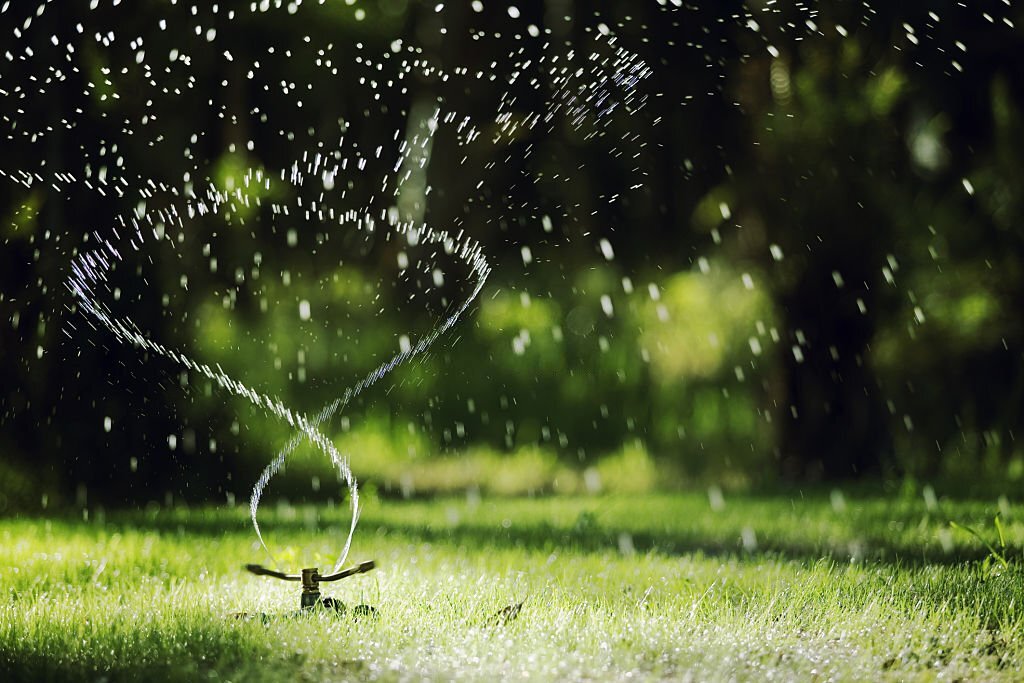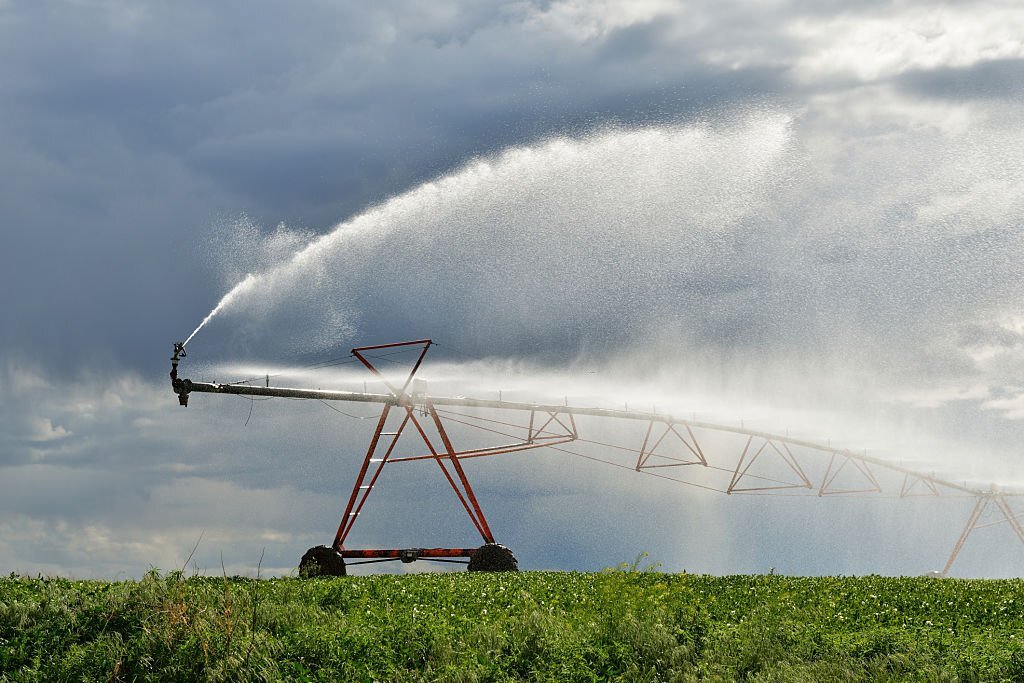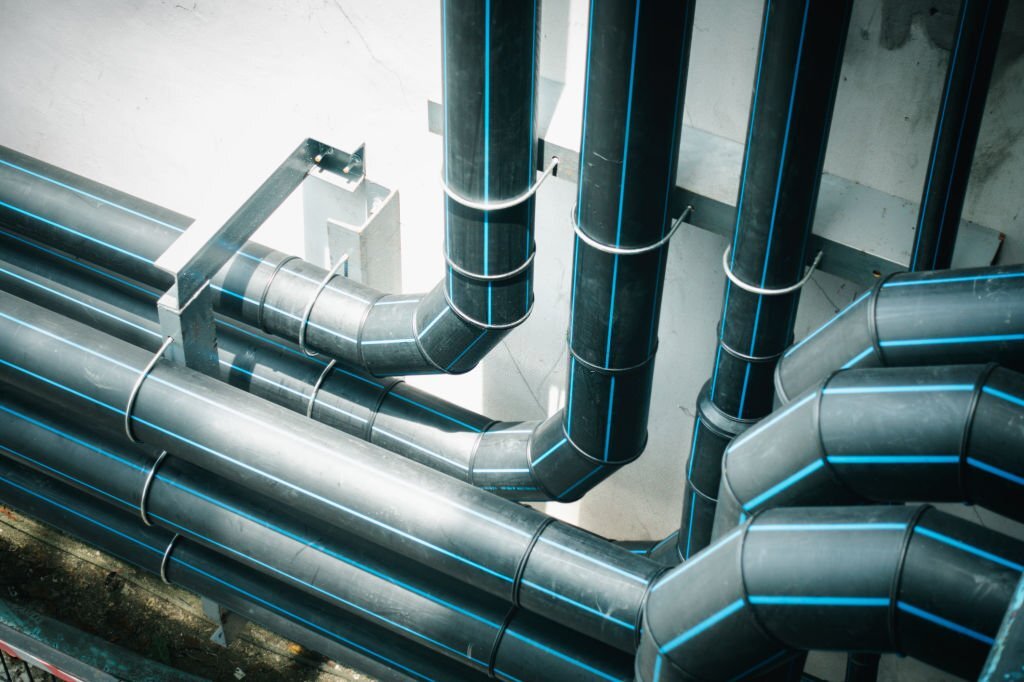
Introduction:
In the ever-evolving realm of agriculture, the utilization of heavy equipment has become a cornerstone of modern irrigation systems. This article delves into the advantages that these powerful machines bring to the table, revolutionizing the way we approach water management in agriculture.
Enhanced Efficiency:

Heavy equipment, such as advanced irrigation pumps and sprinkler systems, significantly amplifies the efficiency of water distribution. Their precision and speed ensure that every corner of the field receives the necessary hydration, minimizing water wastage and maximizing crop yield.
Enhanced efficiency in irrigation systems refers to the improvement and optimization of various processes involved in delivering water to crops. This enhancement often involves the integration of advanced technologies and the use of heavy equipment to make irrigation more precise, timely, and resource-efficient. Here are some aspects of irrigation system enhanced efficiency:
- Precision Irrigation: Enhanced efficiency involves the use of technologies such as drip irrigation, precision sprinklers, and soil moisture sensors. These tools allow farmers to deliver the right amount of water directly to the root zone of plants, avoiding over-irrigation and minimizing water wastage.
- Automation: Automated irrigation systems contribute to efficiency by reducing the reliance on manual labor. Timers, sensors, and control systems can automate the irrigation process, ensuring that crops receive water at optimal times and in optimal quantities.
- Heavy Equipment Integration: The use of heavy equipment, such as powerful pumps and advanced irrigation machinery, enhances efficiency by covering larger areas in less time. This is particularly crucial for large-scale agricultural operations where timely irrigation is essential for crop health.
- Data-Driven Decision Making: Enhanced efficiency in irrigation involves the use of data analytics and monitoring systems. Farmers can collect and analyze data related to soil moisture, weather conditions, and crop water requirements to make informed decisions about when and how much to irrigate.
- Water Conservation: An efficient irrigation system minimizes water wastage, contributing to water conservation efforts. This is achieved through technologies that prevent runoff, evaporation, and over-irrigation, ensuring that every drop of water is utilized effectively.
Time Savings:

The use of heavy equipment streamlines the irrigation process, reducing the time required for watering vast agricultural expanses. Automated systems and high-capacity pumps enable farmers to cover more ground in less time, allowing for a more strategic allocation of labor resources.
Time savings in irrigation systems refer to the reduction in the time required to irrigate agricultural fields through the implementation of efficient and time-saving practices. This involves the use of technologies and strategies that streamline the irrigation process, allowing farmers to cover larger areas in less time. Here are some aspects of time savings in irrigation systems:
- Automated Systems: The adoption of automated irrigation systems is a key factor in time savings. These systems can be programmed to initiate and stop irrigation at specific times, eliminating the need for manual intervention. This is particularly advantageous for large-scale farming operations where manually watering extensive fields can be time-consuming.
- High-Capacity Pumps: The use of high-capacity pumps accelerates the water delivery process. These pumps can move large volumes of water quickly, ensuring that irrigation is completed in a shorter time frame. This efficiency is crucial for ensuring that crops receive water promptly, especially during critical growth stages.
- Scheduling and Timers: Implementing irrigation schedules and timers helps optimize the timing of water delivery. Farmers can set specific schedules based on crop requirements and environmental conditions. This ensures that irrigation occurs at the most beneficial times, minimizing the time spent on unnecessary watering.
- Drip Irrigation and Sprinkler Systems: Drip irrigation and sprinkler systems are designed to deliver water directly to the root zone of plants. This targeted approach minimizes water wastage and speeds up the irrigation process compared to traditional methods, such as flood irrigation.
- Mobile and Remote Monitoring: The ability to monitor and control irrigation systems remotely using mobile devices or computers contributes to time savings. Farmers can make real-time adjustments to irrigation schedules or address issues promptly without the need to be physically present in the field.
Resource Optimization:

Heavy equipment facilitates precise control over water usage, preventing over-irrigation and conserving valuable water resources. Smart irrigation technologies, integrated with heavy machinery, enable farmers to tailor water delivery based on specific crop needs, soil conditions, and weather patterns.
Resource optimization in irrigation systems involves maximizing the efficient use of various resources, including water, energy, and labor, to achieve the best possible outcomes in terms of crop yield and sustainability. Here are key aspects of resource optimization in irrigation systems:
- Water Conservation: Resource optimization begins with efficient water use. Advanced irrigation technologies, such as drip irrigation and soil moisture sensors, enable precise water delivery to plants, minimizing wastage and ensuring that water is used only where and when it is needed.
- Smart Irrigation Technologies: The integration of smart technologies allows for real-time monitoring of soil conditions, weather patterns, and crop water requirements. This data-driven approach enables farmers to make informed decisions about irrigation, optimizing water usage based on actual needs.
- Variable Rate Irrigation (VRI): VRI systems adjust the rate of water application across a field based on variations in soil type, topography, and crop requirements. This precision targeting ensures that each part of the field receives an appropriate amount of water, contributing to resource efficiency.
- Energy-Efficient Equipment: The use of energy-efficient pumps and irrigation equipment is crucial for minimizing the energy footprint of irrigation systems. This not only reduces operational costs but also aligns with sustainable farming practices.
- Labor Optimization: Resource optimization extends to the efficient use of labor. Automated irrigation systems and advanced technologies reduce the manual labor required for irrigation tasks. This allows farmers to allocate human resources to other critical aspects of farming, improving overall productivity.
Cost-Effective Solutions:

While the initial investment in heavy equipment may seem substantial, the long-term cost savings are significant. Increased efficiency, reduced labor requirements, and optimized resource utilization contribute to a more cost-effective and sustainable irrigation process.
Cost-effective solutions in irrigation systems involve implementing strategies and technologies that optimize resource use and minimize overall expenses while maintaining or improving crop yields. Here are key aspects of cost-effective solutions in irrigation:
- Drip Irrigation and Precision Techniques:
- Description: Drip irrigation systems deliver water directly to the root zone of plants, minimizing water wastage.
- Cost Effectiveness: While the initial investment may be higher, drip irrigation often leads to water savings, reduced labor costs, and improved crop yields over time.
- Smart Irrigation Technologies:
- Description: Smart technologies, such as soil moisture sensors and weather-based controllers, enable precise irrigation scheduling based on real-time conditions.
- Cost Effectiveness: By avoiding over-irrigation, smart technologies contribute to water savings, reducing water and energy costs.
- Variable Rate Irrigation (VRI):
- Description: VRI systems adjust water application rates based on field variability, optimizing water use across different soil types and crop zones.
- Cost Effectiveness: VRI can lead to resource savings by tailoring water distribution to specific needs, improving overall efficiency.
- Rainwater Harvesting:
- Description: Collecting and storing rainwater for irrigation reduces reliance on other water sources.
- Cost Effectiveness: Rainwater harvesting can be a cost-effective solution for supplementing irrigation water, especially in regions with seasonal rainfall.
- Energy-Efficient Pumps and Equipment:
- Description: Using energy-efficient pumps and irrigation equipment reduces operational costs.
- Cost Effectiveness: While there might be an initial investment, the long-term energy savings contribute to overall cost-effectiveness.
Adaptability to Terrain:

Modern heavy equipment is designed to navigate various terrains, making them suitable for diverse agricultural landscapes. Whether it’s hilly terrain or expansive flat fields, these machines can adapt to the topography, ensuring uniform water distribution across the entire farm.
Adaptability to terrain in irrigation systems refers to the capability of the system to accommodate and efficiently irrigate agricultural land with varying topography. Different landscapes, including hilly terrain, sloping fields, or flat expanses, present unique challenges for water distribution. Here are key aspects of adaptability to terrain in irrigation systems:
- Topographical Considerations:
- Description: The irrigation system should be designed to account for variations in elevation, slopes, and contours of the land.
- Adaptability: Systems that can navigate and deliver water effectively across different terrains ensure uniform water distribution.
- Contour Farming Practices:
- Description: Aligning irrigation practices with contour farming, where crops are planted along the contour lines, helps prevent soil erosion.
- Adaptability: Irrigation systems that complement contour farming contribute to soil conservation on sloping terrains.
- Variable Rate Irrigation (VRI):
- Description: VRI technology adjusts water application rates based on the specific needs of different areas within a field.
- Adaptability: VRI systems are well-suited for terrains with varying soil types and topography, allowing for customized irrigation.
- Precision Sprinkler Systems:
- Description: Advanced sprinkler systems with precise control over water distribution.
- Adaptability: These systems can be designed to cover irregularly shaped fields and adjust water application rates based on terrain features.
- Drip Irrigation on Slopes:
- Description: Drip irrigation can be adapted for use on slopes by incorporating technologies that prevent water runoff.
- Adaptability: Drip systems with anti-runoff features ensure efficient water delivery on sloping terrains.
Precision Agriculture:

The integration of heavy equipment aligns with the principles of precision agriculture. Sensors, GPS technology, and data analytics enable farmers to make informed decisions regarding irrigation, fostering a more intelligent and targeted approach to crop management.
Precision agriculture in irrigation systems involves the use of advanced technologies and data-driven approaches to optimize the efficiency and effectiveness of water management in farming. The goal is to apply water precisely where and when it is needed, reducing waste, conserving resources, and improving overall agricultural productivity. Here are key aspects of precision agriculture in irrigation systems:
- Sensor Technologies:
- Description: Soil moisture sensors, weather stations, and other sensor technologies provide real-time data on soil conditions, temperature, humidity, and crop water needs.
- Precision: These sensors enable precise monitoring of the water status in the soil, allowing farmers to tailor irrigation to specific requirements.
- Automated Irrigation Systems:
- Description: Automated systems use sensors and controllers to initiate and adjust irrigation schedules based on real-time data.
- Precision: Automation ensures that irrigation is precisely timed and optimized, responding to changing conditions without the need for manual intervention.
- Variable Rate Irrigation (VRI):
- Description: VRI systems adjust water application rates based on spatial variability in the field, considering factors like soil type, topography, and crop needs.
- Precision: VRI allows for customized irrigation, ensuring that different parts of the field receive the right amount of water.
- GPS and GIS Integration:
- Description: Global Positioning System (GPS) and Geographic Information System (GIS) technologies assist in mapping and planning precise irrigation strategies.
- Precision: Integration with GPS and GIS enables accurate mapping of fields, facilitating targeted irrigation and resource management.
- Remote Sensing:
- Description: Satellite or drone-based remote sensing technologies provide high-resolution imagery for monitoring crop health and identifying water stress.
- Precision: Remote sensing allows for early detection of irrigation needs and the assessment of crop performance across large areas.
Conclusion:
In conclusion, the advantages of incorporating heavy equipment into irrigation systems are multifaceted. From boosting efficiency and saving time to optimizing resources and embracing precision agriculture, these robust machines are indispensable tools in the modern farmer’s arsenal. As agriculture continues to evolve, the integration of heavy equipment marks a pivotal step toward sustainable and productive farming practices.



